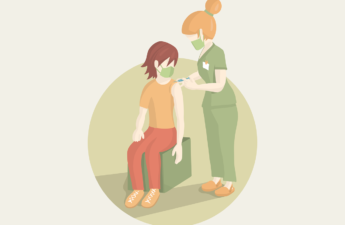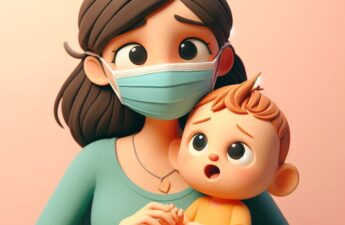Behavioral Health Resources to Help for Back to School Mental Health

New THINK Toolbox among resources to help address behavioral health impacts
From the Washington State Department of Health
OLYMPIA — As we see students and educators head back into the classroom and restart the in-person learning routine, the Department of Health (DOH) is providing behavioral health tips and resources for navigating the emotional responses that children, teens, and adults may experience during this exciting and stressful time.
The COVID-19 Back-to-Classroom THINK Toolbox is a resource to help with adjusting to the return of in-person school and learning. THINK, which stands for Teaching with Healthcare Informed Neurological strategies for Kids, is a toolbox with information to help school-age children and teens deal with the emotional impacts of COVID-19, and tips on how to build and maintain resilience and practice self-care during a disaster.
“Children and teens are uniquely affected by the pandemic,” says Dr. Kira Mauseth, co-lead for the behavioral health strike team at the Department of Health. “Children and youth process information differently than adults. They need different structures in place to support them through disasters and large transitions, such as promoting recovery in the classroom, and return to back-to-classroom education. The THINK Toolbox was developed to address these areas and some of the trauma and stress that we’ve all experienced as a result of the pandemic.”
Increased anxiety, acting out, and behavioral regression at home or at school are some of the behavioral health responses that parents, caregivers and teachers are likely to see or encounter in students this fall.
Also be aware of “red flag behaviors” such as suicidal thinking or expression (talking about it), violence, and aggression – these behaviors will require more or additional professional support.
For children with autism spectrum disorder (ASD), they are twice as likely to experience more intense and more frequent behavior problems during the pandemic.
As schools are now open for in-person learning, ‘back to classroom’ education and recovery for students is also underway. When promoting recovery in the classroom, it is important to remember that some students come from groups that have been more severely impacted by the COVID-19 pandemic.
With this in mind, encouraging and building resilience for students is key! Activities that facilitate cooperation and communication, and helping children and youth develop self-efficacy (their belief in their ability to achieve a goal) are very important aspects for resilience in the classroom. Activities that also provide structure, consistency and the opportunity to contribute should also be strongly emphasized.
“As a parent and a physician, I know that in-person learning is hugely beneficial to children’s overall well-being,” says Umair Shah, MD, MPH, Secretary of Health. “In-person interaction helps ensure equitable access to education for all students. The work we do now to keep them safe will, in the long term, lead to a brighter and healthier future for our kids.”
Teachers, coaches, school staff, mentors, parents, and caregivers are also at risk for additional anxiety right now. For these groups, practicing self-care in the ways that specifically work for them, is the best medicine. More than ever, patience and compassion are required right now.
Additional Resources:
- A COVID-19 Behavioral Health Toolbox for Families (wa.gov) includes tools for children with autism spectrum disorder
- K-12 Schools Requirements 2021-2022 (wa.gov)
- National Parent Helpline, 1-855-427- 2736
- The Washington State COVID-19 Response: Mental and emotional well-being webpage
- A Mindful State: a people-powered resource that connects individuals to mental health resources and empowers them to share their stories


